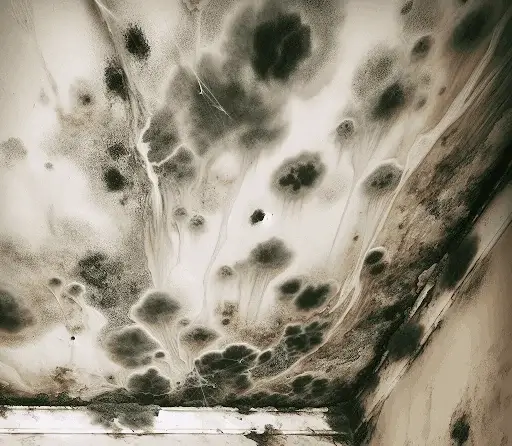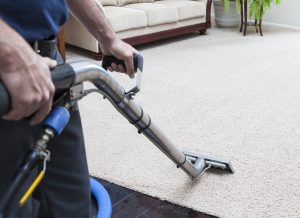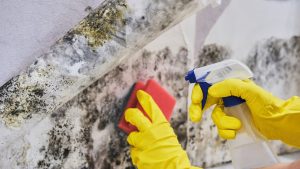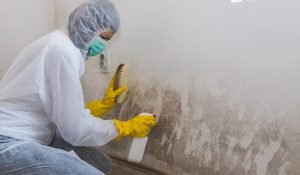
Mould is a common issue in many homes. It’s not just unsightly, but it can also pose serious health risks. There are various methods to tackle this problem. Some people opt for DIY mould removal, while others prefer professional services.
But which is the best option? This article aims to shed light on this question. We’ll explore the pros and cons of DIY mould removal and professional services.
Whether you’re a homeowner, a renter, or a property manager, this guide will help you make an informed decision. Stay tuned to learn more about mould removal methods, and how to choose the best one for your situation.
Understanding Mould and Its Risks
Mould is a type of fungus that thrives in damp environments. It reproduces by releasing tiny spores into the air. These spores can be found almost everywhere, both indoors and outdoors. However, when they land on damp spots in your home, they may start to grow.
What is Mould?
Mould is a living organism that breaks down dead materials. It plays a crucial role in nature. However, when it grows indoors, it can cause problems. It can damage your property and affect your health.
Health Risks of Mould Exposure
Exposure to mould can lead to health issues. Some people may experience allergic reactions, such as sneezing, red eyes, and skin rash. Others may have more severe reactions. For instance, mould exposure can worsen asthma symptoms and cause upper respiratory tract symptoms in healthy individuals.
Signs of Mould in Your Home
Mould can be sneaky. It often grows in hidden areas, making it hard to detect. One common sign of mould is a musty smell. If your home smells earthy or damp, you might have a mould problem.
Visible signs of mould include black, green, or white specks on your walls, floors, or ceilings. Mould can also grow behind wallpaper, under carpets, and inside walls. If you notice any of these signs, it’s important to take action. Ignoring mould can lead to bigger problems down the line.
DIY Mould Removal Methods
If you’ve spotted mould in your home, you might be considering DIY removal. This can be a viable option for small, surface-level mould issues. However, it’s important to understand that DIY methods have their limitations. They may not be effective for larger infestations or hidden mould.
Common Household Items for Mould Removal
Several household items can be used for DIY mould removal. These include vinegar, baking soda, and hydrogen peroxide.
- Vinegar: This pantry staple is a natural disinfectant. It can kill up to 82% of mould species.
- Baking Soda: Mixed with water, baking soda can remove mould and absorb moisture, preventing future growth.
- Hydrogen Peroxide: This common antiseptic can kill mould on many surfaces. It also helps to prevent future mould growth.
Safety Precautions for DIY Mould Removal
Safety should be your top priority when dealing with mould. Always wear protective gear, including gloves, goggles, and a mask. Ensure the area is well-ventilated. This helps to reduce your exposure to mould spores. Never mix cleaning solutions. Certain combinations, like bleach and vinegar, can produce harmful gases.
Lastly, if you feel unwell during the process, stop immediately. Some people are more sensitive to mould than others. If you experience symptoms like dizziness, shortness of breath, or skin irritation, seek medical attention.
When to Call a Professional Mould Remediation Specialist
While DIY methods can be effective for minor mould issues, they may not suffice for larger infestations. If you’re dealing with extensive mould growth, it’s time to call a professional.
Professionals are also necessary when mould is hidden. This could be behind walls, under carpets, or in HVAC systems. In such cases, special equipment is needed to detect and remove the mould.
If you’ve tried DIY methods and the mould keeps returning, this is another sign you need a professional. Persistent mould often indicates a deeper issue that needs addressing.
Lastly, if you’re sensitive to mould or have health issues, it’s safer to hire a professional. They have the necessary protective gear and training to handle mould without risking health.
Services Offered by Professionals
Professional mould remediation specialists offer a range of services. These go beyond simple mould removal. They can conduct a thorough mould inspection. This involves identifying the type of mould and its source.
Professionals also offer mould remediation. Here at Flood Squad we are professionals in mould removal Sydney. This is a comprehensive process that includes removal, cleaning, and prevention measures.
In addition, they can provide advice on preventing future mould growth. This includes tips on improving ventilation, controlling humidity, and using mould-resistant materials.
The Professional Mould Inspection and Assessment Process
The professional mould inspection process begins with a visual assessment. The specialist will look for signs of mould in your property.
They may also use tools like moisture meters and infrared cameras. These can detect hidden mould and moisture sources. The goal is to identify all mould, visible and hidden, to ensure a thorough remediation.
Comparing Costs: DIY vs. Professional Mould Removal
When it comes to cost, DIY mould removal can seem more appealing. After all, household items like vinegar or baking soda are cheap and readily available. However, the cost of professional mould removal should be viewed as an investment. It’s not just about getting rid of visible mould. It’s about addressing the root cause and preventing future growth.
Moreover, if DIY methods fail to fully eradicate the mould, you may end up paying for professional services anyway. In the long run, hiring a professional from the start could save you time and money.
Lastly, consider the potential cost of not properly addressing a mould problem. This could include health issues, property damage, and decreased property value. When you factor in these potential costs, professional mould removal can be a cost-effective solution.
The Benefits of Professional Mould Remediation
Professional mould remediation offers several benefits that DIY methods can’t match. For one, professionals have access to advanced tools and techniques. They can detect hidden mould, something that’s often missed in DIY attempts. This ensures that all mould, not just the visible parts, is removed.
Advanced Techniques and Long-term Solutions
Professionals use advanced techniques like HEPA vacuuming and biocides. These methods are more effective at removing mould than household items.
Moreover, professionals don’t just remove mould. They also identify and address the source of moisture causing the mould. This provides a long-term solution to prevent future mould growth.
Improving Indoor Air Quality and Health
Professional mould remediation can also improve indoor air quality. By removing all mould spores, professionals can help reduce health risks associated with mould exposure.
This is particularly important for health-sensitive individuals, such as those with allergies or asthma. For these individuals, professional mould remediation can greatly improve their quality of life.
Preventing Future Mould Growth
Preventing mould growth is just as important as removing existing mould. This involves addressing the underlying cause of mould, usually moisture. A holistic approach to mould issues is necessary. This includes both removal and prevention strategies.
Maintenance Tips for a Mould-Free Environment
Maintaining a mould-free environment involves several steps. Here are a few tips:
- Ensure proper ventilation in your home.
- Use dehumidifiers in damp areas.
- Regularly clean and dry wet areas, like bathrooms and kitchens.
These steps can help prevent mould from taking hold in the first place.
Importance of Regular Inspections
Regular property inspections are crucial in preventing mould growth. They can help identify potential mould issues before they become serious. Inspections are particularly important in climates prone to mould, like Sydney. In such areas, regular inspections can be the key to maintaining a mould-free home.
Conclusion: Making the Right Choice for Your Home
Choosing between DIY mould removal and professional services depends on your specific situation. Consider the extent of the mould, your budget, and your ability to handle the task. Remember, while DIY methods can be effective for minor mould issues, professional services offer thorough, long-term solutions for serious mould problems.



